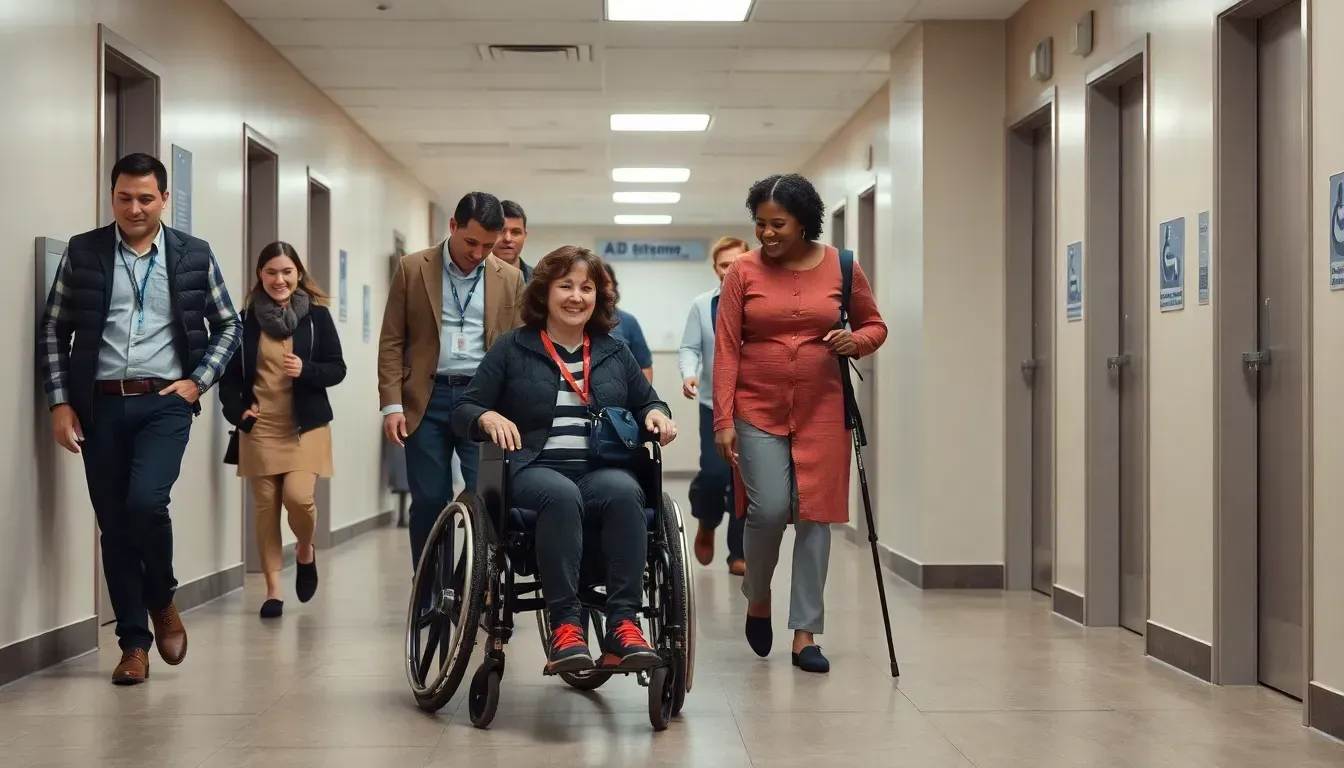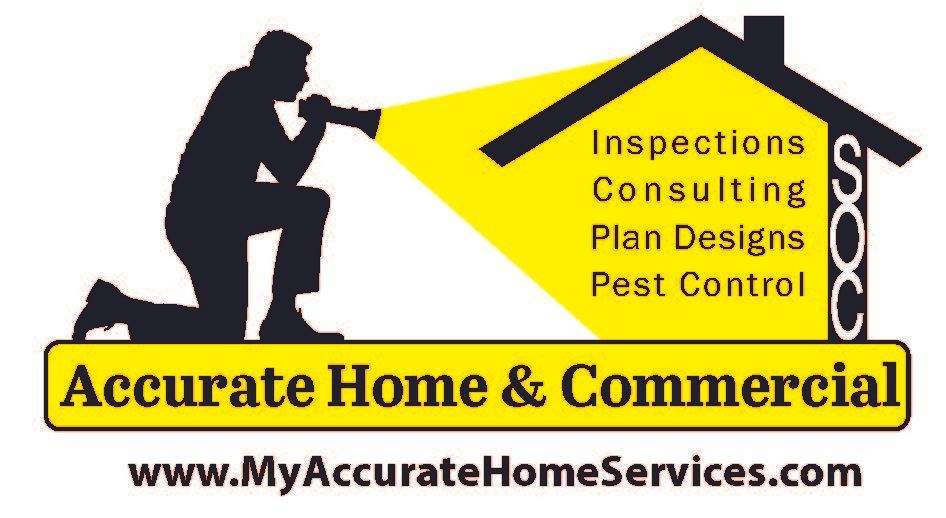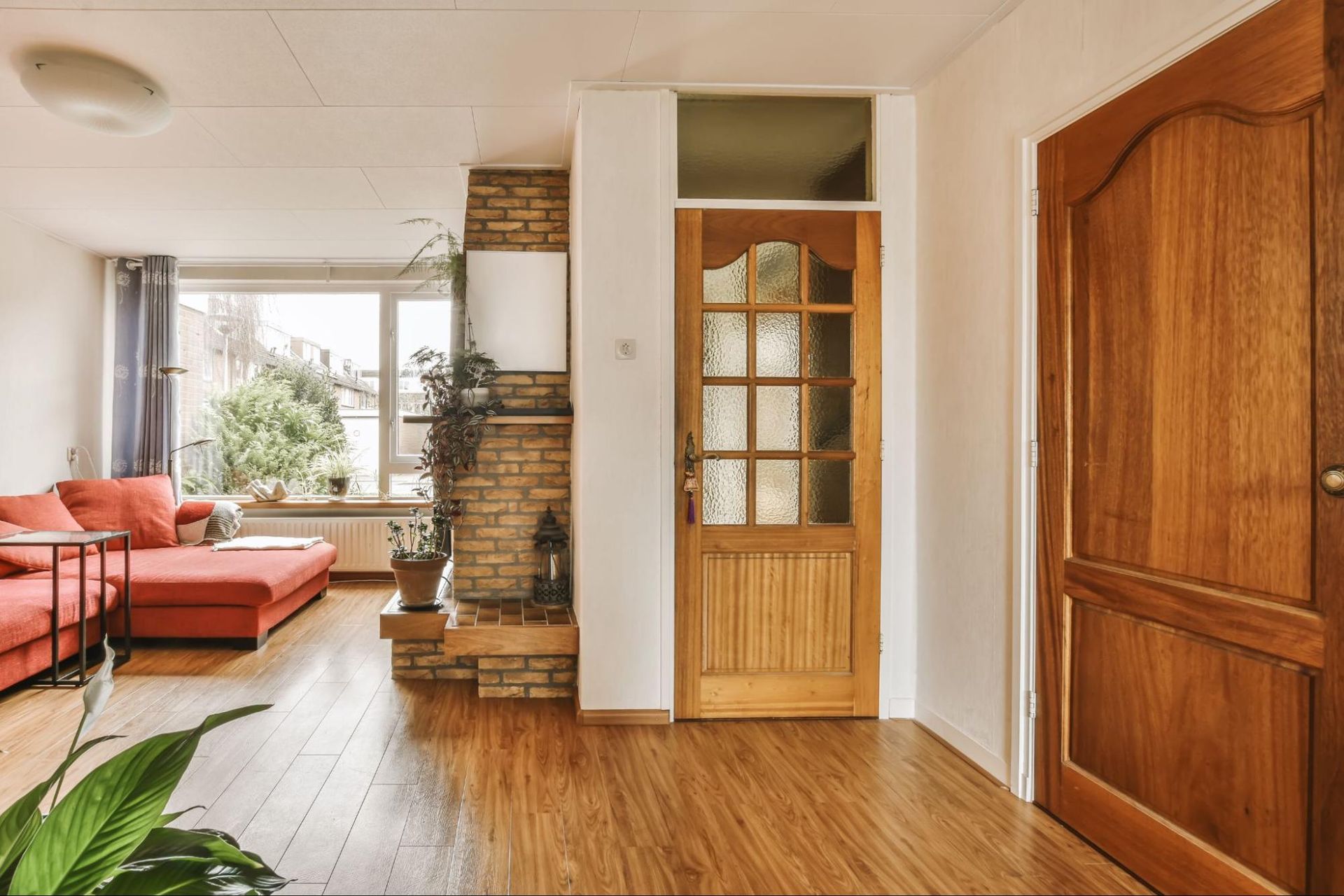How to Pass ADA Restroom Inspections for Accessibility Glowingly
Making sure restrooms are accessible is more than just ticking a box—it's all about fostering inclusivity. We totally understand that homeowners often experience a bit of confusion with unclear guidelines, unexpected expenses, and the worry of potential penalties for non-compliance.
But don't worry, with this guide, inspections turn into a smooth and easy part of property management, making it all just a little bit easier for you!
Overview of ADA Restroom Inspections
ADA restroom inspections check if restrooms meet the Americans with Disabilities Act standards to ensure accessibility for individuals with disabilities. Key areas looked at include:
- Width of pathways
- Grab bar placement
- Sink heights
- Toilet setups
The layout should allow wheelchair movement and have accessible doors, with proper signage to aid navigation. Inspections ensure compliance with Texas Accessibility Standards (TAS) and help property owners make necessary adjustments.
By having these inspections, property owners gain valuable insights for renovations that promote accessibility for all.
Accurate Home and Commercial Services specializes in these inspections, providing reliable assessments that minimize legal risks and improve reputation, particularly for public facilities.
Importance of ADA Compliance

ADA compliance ensures that facilities offer equal access for individuals with disabilities. Meeting these standards is crucial for property owners to mitigate legal risks and foster an inclusive environment.
Legal Implications
Legal implications arise when facilities fail to comply with ADA regulations. Non-compliance can lead to lawsuits, fines, and costly renovations. Property owners must understand that the law protects individuals’ rights to accessible restrooms. Engaging in ADA restroom inspections helps identify potential compliance issues before they escalate into legal challenges, reinforcing the necessity of adhering to established guidelines.
Public Accessibility
Public accessibility is vital for ensuring that all individuals, regardless of physical abilities, can navigate facilities with ease. Accessible restrooms play a significant role in encouraging public engagement and participation in various venues. When property owners prioritize compliance, they create welcoming environments that enhance user experience and broaden customer bases. ADA restroom inspections serve as a proactive measure to guarantee that facilities meet public accessibility standards, thereby promoting inclusivity for everyone.
Key Elements of ADA Restroom Inspections
ADA compliance ensures that facilities offer equal access for individuals with disabilities. Meeting these standards is crucial for property owners to mitigate legal risks and foster an inclusive environment.
Legal Implications
Legal implications arise when facilities fail to comply with ADA regulations. Non-compliance can lead to lawsuits, fines, and costly renovations. Property owners must understand that the law protects individuals’ rights to accessible restrooms. Engaging in ADA restroom inspections helps identify potential compliance issues before they escalate into legal challenges, reinforcing the necessity of adhering to established guidelines.
Public Accessibility
Public accessibility is vital for ensuring that all individuals, regardless of physical abilities, can navigate facilities with ease. Accessible restrooms play a significant role in encouraging public engagement and participation in various venues. When property owners prioritize compliance, they create welcoming environments that enhance user experience and broaden customer bases. ADA restroom inspections serve as a proactive measure to guarantee that facilities meet public accessibility standards, thereby promoting inclusivity for everyone.
Key Elements of ADA Restroom Inspections
ADA restroom inspections encompass multiple essential aspects that ensure compliance with the Americans with Disabilities Act. Evaluating these elements guarantees accessibility for all users.
Dimensions and Space Requirements
Dimensions play a critical role in ADA restroom compliance. Pathway widths must accommodate wheelchair access, with clear maneuvering space around fixtures. Toilet stalls require sufficient depth and width, allowing users to navigate without obstruction. Additionally, the layout must provide adequate turning space, accommodating at least a 60-inch diameter circular maneuvering area. Ensuring proper dimensional specifications supports safety and usability for individuals with disabilities.
Fixtures and Amenities
Fixtures and amenities significantly affect the accessibility of restrooms. Sinks must be mounted at an appropriate height, allowing easy access for all users. Grab bars need installation near toilets and in shower areas, enhancing stability and support. Additionally, faucets should operate with minimal effort, using either lever handles or sensors for ease of use. Effective oversight of these fixtures promotes an inclusive restroom environment and complies with ADA standards.
Common Issues Found During Inspections
ADA restroom inspections identify various issues affecting compliance. Understanding these common problems aids property owners in making necessary adjustments to meet accessibility standards.
Accessibility Barriers
Accessibility barriers often arise from insufficient dimensions in restrooms. Narrow pathways can restrict maneuverability, rendering facilities unusable for individuals with disabilities. Improperly placed grab bars may fail to provide adequate support. Additionally, inadequate signage may lead to confusion and hinder navigation. Each restroom must provide clear access to fixtures, including sinks and toilets, to ensure ease of use.
Maintenance Concerns
Maintenance concerns significantly impact ADA compliance. Periodic checks on the functionality of fixtures, such as faucets and toilets, are essential to uphold accessibility features. Broken grab bars or malfunctioning automatic doors can create hazards for users. Regular cleaning also plays a vital role in maintaining accessible spaces, ensuring no obstructions block pathways. Accurate Home and Commercial Services aids property owners in addressing these maintenance concerns effectively, promoting continuous compliance with ADA standards in their facilities.
Best Practices for Conducting Inspections
Conducting effective ADA restroom inspections requires a strategic approach. Following established practices ensures compliance with regulations and enhances accessibility.
Checklist for Inspectors
Inspectors should utilize a detailed checklist for thorough evaluations. Key elements include:
- Pathway widths: Verify sufficient width for wheelchair access.
- Grab bar placements: Ensure proper locations and height for safety.
- Sink heights: Confirm compliance with accessibility standards.
- Toilet configurations: Assess spacing and accessibility features.
- Turning space: Check for a minimum diameter of 60 inches for maneuverability.
- Signage: Ensure clear, visible directions for restroom navigation.
Utilizing a comprehensive checklist streamlines the inspection process and ensures all critical aspects meet ADA guidelines.
Training and Certification
Inspectors must undergo specialized training to conduct ADA restroom inspections effectively. They should obtain certification in accessibility compliance to understand the complexities of ADA and TAS standards. Regular workshops enhance skills and keep inspectors informed about the latest guidelines. Certification adds credibility, ensuring clients that inspections follow rigorous standards. Trained inspectors provide invaluable expertise, helping property owners navigate compliance successfully.
Engaging trained inspectors ensures accurate evaluations and supports adherence to ADA restroom requirements.
Conclusion
Prioritizing ADA restroom inspections is essential for property owners aiming to create accessible environments. By ensuring compliance with ADA and TAS standards, they not only mitigate legal risks but also enhance the user experience for everyone. Engaging with experts like Accurate Home and Commercial Services simplifies the inspection process and helps identify necessary modifications.
This proactive approach fosters inclusivity and encourages greater participation in public spaces. Regular assessments and maintenance of restroom facilities ensure ongoing compliance and usability, making them welcoming for all individuals. Embracing these practices is a vital step toward building a community that values accessibility and equal opportunity.
Frequently Asked Questions
What are ADA restroom inspections?
ADA restroom inspections assess compliance with the Americans with Disabilities Act (ADA) standards. They evaluate critical features like pathway widths, grab bar placements, sink heights, and toilet configurations to ensure accessibility for individuals with disabilities.
Why are ADA inspections important for property owners?
ADA inspections are essential for property owners to mitigate legal risks, avoid potential fines, and ensure all individuals can access facilities. Compliance promotes inclusivity and enhances customer experience, which broadens the user base.
What common issues are found during ADA restroom inspections?
Common issues include insufficient restroom dimensions, improperly placed grab bars, inadequate signage, and narrow pathways that restrict maneuverability. These issues can hinder accessibility for individuals with disabilities and lead to non-compliance.
How does Accurate Home and Commercial Services help with ADA compliance?
Accurate Home and Commercial Services offers comprehensive ADA restroom inspections to help property owners navigate compliance. Their expert team conducts thorough evaluations, identifies necessary modifications, and provides guidance on creating accessible facilities.
What should be included in an ADA restroom inspection checklist?
An ADA restroom inspection checklist should include verifying pathway widths, grab bar placements, sink heights, toilet configurations, turning space, and proper signage. This ensures all necessary elements for compliance are evaluated effectively.
How often should ADA inspections be conducted?
Regular inspections are recommended to ensure ongoing compliance with ADA standards. Property owners should perform inspections periodically and after any renovations to maintain accessibility features and address maintenance concerns.
What are the legal implications of non-compliance with ADA standards?
Non-compliance with ADA standards can lead to lawsuits, costly fines, and extensive renovations. Property owners may face legal action from individuals or organizations if their facilities do not meet accessibility requirements, emphasizing the importance of compliance.
What training is required for ADA inspectors?
ADA inspectors should undergo specialized training and obtain certification in accessibility compliance to ensure accurate evaluations. Regular workshops can also keep inspectors informed about the latest guidelines and improvements in ADA standards.











